CleanSpark Faces Possible $185M in Tariffs Over Alleged Chinese Mining Rig Imports
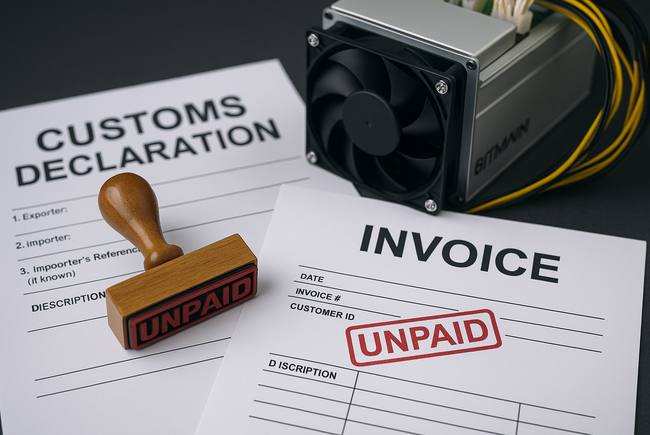
Bitcoin miner CleanSpark Inc. said U.S. Customs and Border Protection has alleged that certain mining rigs it imported in 2024 were manufactured in China and could be subject to punitive tariffs, a claim the company disputes. In a quarterly filing, CleanSpark disclosed receiving invoices from CBP beginning May 27, asserting Chinese-origin duties on machines imported between April and June 2024. The company said it exclusively operated Bitmain’s Antminer rigs during that period. If duties are applied retroactively to all affected imports from April 2024 onward, CleanSpark estimates potential exposure of about $185 million, excluding interest. The company maintains that its import documentation and supplier assurances show the machines came from outside China, in accordance with purchase agreements. CleanSpark said it has not recorded a provision for the potential charges, citing that a cash outflow is not considered probable as of June 30. Broader Industry Scrutiny CleanSpark is not the only publicly traded miner under review by CBP. Earlier this year, Australia-based IREN disclosed a similar dispute, with potential liability of about $100 million tied to imports between April 2024 and February 2025. CBP alleges those machines also originated in China. Both companies are contesting the agency’s findings and defending against enforcement actions. Neither has acknowledged wrongdoing, and both argue the evidence supports their stated countries of origin. The two cases share overlapping timelines, suggesting a coordinated review by U.S. customs authorities. The agency has increased enforcement of trade restrictions targeting Chinese-made goods, particularly technology and industrial equipment, under Section 301 tariffs. Potential Impact and Next Steps A CBP determination in favour of the government could lead to significant retroactive duties for both companies. CleanSpark’s estimated $185 million exposure represents a substantial portion of its reported quarterly revenue, though the company emphasized that it does not currently anticipate paying the tariffs. The disputes come as U.S. miners face rising operating costs from electricity prices, market volatility, and regulatory scrutiny. While hardware sourcing has become a critical consideration for the industry, customs enforcement adds another layer of potential risk. Neither CleanSpark nor CBP commented beyond the company’s filing. CBP generally does not confirm or discuss ongoing enforcement actions. IREN has said it will continue to challenge the agency’s Notice of Action regarding its imports. For now, both tariff disputes remain unresolved. The outcomes could set precedents for how customs authorities assess origin claims for cryptocurrency mining equipment, especially in cases involving multinational supply chains.
How to Trade XRP Futures
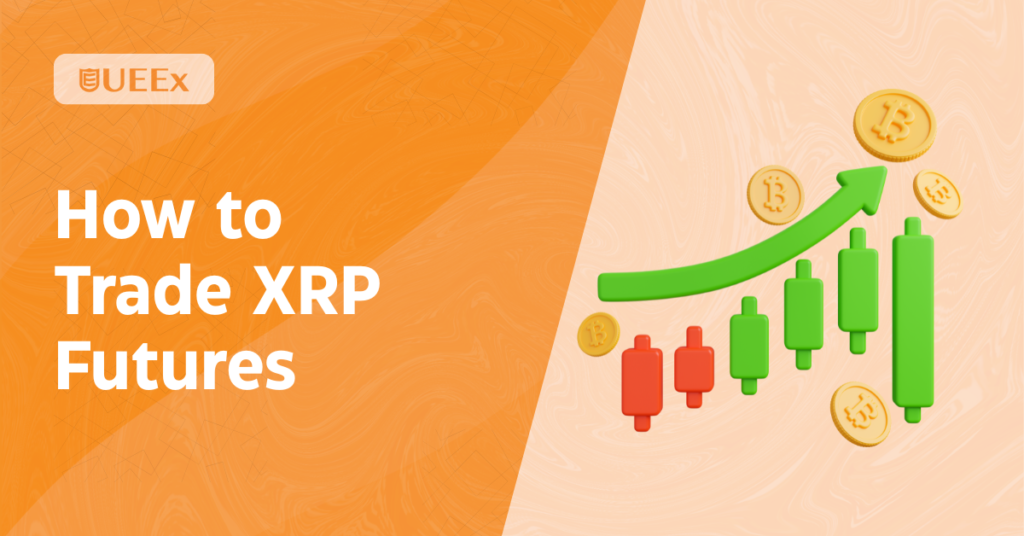
XRP futures have always been popular in the cryptocurrency market, as they offer a good avenue for profiting from price fluctuations without the need to purchase the actual token. These regulated contracts are cash-settled and have become a focal point for both institutional investors and retail traders. So why are traders gravitating towards trading in XRP futures? Key Takeaways What Is XRP? XRP is the main cryptocurrency of the Ripple network, a digital payment system designed for quick, low-cost international money transfers. Unlike traditional cryptocurrencies, XRP mostly serves as a bridge currency for financial institutions. It helps them complete cross-border transactions faster and with lower fees. Understanding this function is important for traders because it shows XRP’s key role in global finance beyond just speculative trading. One common method for trading XRP is futures trading. This is a type of derivative trading where participants agree to buy or sell the asset at a set price on a future date. This is different from spot trading, where the asset is exchanged immediately at current market prices. Futures trading allows traders to speculate on XRP’s price changes without owning the asset directly. It also introduces options like leverage and hedging, which can increase both risk and reward. Read Also: Ripple (XRP) Technical Analysis Guide: Step-By-Step Breakdown Insights on XRP Trading in 2025 XRP continues to thrive in 2025 as a utility-driven digital asset that supports fast, low-cost cross-border payments. As of mid-July 2025, XRP has shown notable strength in the market. The asset recently rose from $2.84 to $2.95 with strong institutional volume, signaling a potential trend reversal. Price action over the past two weeks shows a 38% increase from early July lows of around $2.17 to highs near the $3.00 mark. According to data from Coindesk, buyers are currently facing a tight resistance zone between $2.94 and $3.00. A breakout above this level could signal a move toward the $3.28 to $3.45 area. What’s driving this momentum? Increased institutional interest is a major factor, along with the upcoming launch of the ProShares XRP Futures ETF on July 18. OTC desks now account for almost 19% of XRP volume, and exchanges like Binance and Coinbase are experiencing higher daily liquidity. These trends indicate that more sophisticated participants are entering the market, using XRP not just for speculation but also for hedging and portfolio diversification. On a monthly chart, XRP’s price has recovered impressively from a June low of around $2.21 to the current range of about $2.96. Technical analysts suggest the bullish structure remains intact as long as the asset stays above the $2.85 support level. For traders comparing spot and futures markets, XRP presents attractive opportunities in both. Spot trading enables direct ownership and long-term holds, while futures trading—especially now with ETF exposure—offers leverage and risk management tools. However, futures come with greater volatility and require disciplined margin management. What Are XRP Futures? An XRP futures contract is a derivative contract that locks in the price at which the purchase/sale of XRP will happen at some time in the future. While spot trading gives you ownership of the XRP you bought, futures trading involves pure speculation, that is, price movement profit (or loss) with no actual holding of the asset. In spot trading, you actually purchase XRP at the current market price and keep it in a wallet, whereas in futures trading, you exchange contracts with their value based on the price of XRP. Here’s a table comparing XRP spot and futures trading: XRP Spot Trading XRP Futures Trading Ownership You own XRP No XRP ownership (cash-settled) Leverage Usually 1:1 (no leverage) 5x–100x (varies by exchange) Short Selling Limited (must borrow XRP) Easy (direct short positions) Settlement Immediate Future expiration date Risk Only price fluctuations Leverage magnifies gains & losses Benefits and Risks of Trading XRP Futures Trading XRP futures offers unique opportunities, though there are certain risks traders ought to consider: Benefits of Trading XRP Futures Here are a couple of reasons to trade XRP futures: Regulated exchanges provide high liquidity for XRP futures contracts. When trading futures on these exchanges, traders can achieve tighter spreads and not worry about the price when entering or exiting positions. Traders are restricted in a spot market as they only make money buying (price up), while futures allow traders to make a profit when they long and short. XRP futures allow for bidirectional trading and numerous profit opportunities when the price goes up and down. Traders can also hedge their spot position XRP holdings with short futures positions without worrying about borrowing and selling XRP tokens. Micro and Nano XRP futures contracts provide retail investors with access to XRP derivatives trading. These smaller contract sizes require significantly less capital than conventional futures contracts, allowing sophisticated trading strategies to be accessible to retail investors who cannot afford the high position sizes. For instance, the CME launching its XRP futures with $19.3 million of volume upon launch reflects positive institutional interest and confidence. This institutional presence adds liquidity as well as validates the XRP derivatives ecosystem. Risks of XRP Futures The following are some risks associated with XRP futures: The leverage available in futures trading can magnify losses just as much as it can magnify gains. The risk is further heightened on unregulated crypto exchanges where leverage can be as high as 100:1. A small movement in price can result in margin calls or liquidation of an entire position. The volatility in XRP can result in rapid liquidation, as aforementioned. Whether it is a result of a news release, a regulatory development, or simply broader crypto market sentiment, the potential price movement can gap beyond your stop-loss levels. While liquidity is sufficient at major platforms such as CME, smaller exchanges for XRP futures may have thin order books. This can lead to more slippage, as larger orders may move prices against traders before executions are finalized. How to XRP Futures with UEEx Trading XRP futures can be a powerful way of gaining leveraged exposure
How to Buy Crypto Anonymously
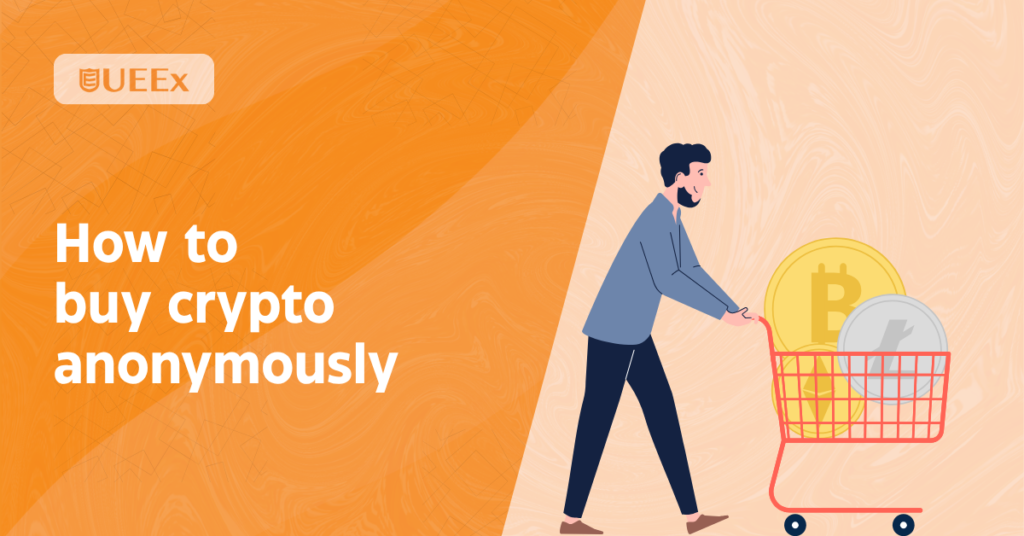
Do you always feel tracked or traced while purchasing crypto? Well, you are not alone. Many people feel the same way. Every click, swipe, and transaction can be watched or recorded. When it comes to buying cryptocurrency, your details can easily be tied to your wallet or exchange account. Cryptocurrency was first created with the idea of giving people more freedom and privacy in how they manage their finances. However, as it gained popularity, rules and ID checks were introduced on many platforms. For some people, this might not matter much. But for those who care deeply about privacy, it’s a serious issue. If you’re one of them, this article will guide you through the different ways to buy crypto without revealing your identity. Read Also: How to Buy the Dip in Crypto: The Ultimate Guide Key Takeaway KYC and AML Compliance in Buying Cryptocurrency Now, before I explain how to buy crypto anonymously, you should also know why these exchanges ask for your details. Cryptocurrency exchanges often require you to complete KYC (Know Your Customer) and AML (Anti-Money Laundering) checks. These are legal steps to stop illegal activities like fraud, money laundering, and terrorism financing. What Is KYC (Know Your Customer)? KYC means the crypto platform needs to know who you are before you can buy cryptocurrency. They ask for: This helps them verify you’re a real person and not someone pretending to be someone else. What Is AML (Anti-Money Laundering)? AML rules help prevent criminals from using cryptocurrency to “wash” dirty money and make it look clean. The platform watches for: Why KYC and AML Are Important in Crypto KYC and AML are important in cryptocurrency because digital coins can be harder to trace than regular money. Governments are trying to regulate crypto more strictly. So even though crypto is often seen as private, many exchanges must follow these rules to stay legal. That makes it easier for criminals to use crypto for illegal things like fraud, drug sales, or hiding stolen money. By using KYC and AML checks, exchanges stop bad actors and make crypto safer for everyone. How to Buy Crypto Anonymously Traditionally, crypto transactions are now more or less traceable. However, this does not mean that some crypto transactions cannot be done anonymously. While this can require more effort and planning, the following methods can help keep your transactions anonymous. Use a VPN or Tor for Extra Privacy Before you do anything online, use a VPN or the Tor browser. These tools hide your IP address and help keep your location private. This makes it harder for websites or exchanges to track who you are. NordVPN is one example of a VPN that supports crypto users and even accepts Bitcoin payments. Read Also: Top 5 Secure Crypto Wallets to Safeguard Your Digital Assets Buy Bitcoin with Cash at ATMs Bitcoin ATMs let you buy Bitcoin with cash, and some don’t ask for ID if the amount is small. You just insert cash, and the Bitcoin goes to your wallet. Some ATMs can even create a wallet for you right there. Fees are usually high, around 5% to 10%, and most of these ATMs are in the United States. But remember, Bitcoin isn’t fully private because all transactions are recorded on a public list anyone can see. For more privacy, you can swap your Bitcoin for a privacy coin like Monero, which is explained next. Choose a Privacy-Focused Coin Monero is one of the best options if you want to buy crypto anonymously. Unlike Bitcoin or Ethereum, which have public transaction records, Monero hides the details of every transaction. That means you can send and receive Monero without anyone knowing how much was sent, who sent it, or who received it. If you want to stay private, Monero is a smart choice. To get started, you can find Monero on certain exchanges that don’t require ID or use peer-to-peer (P2P) platforms like Bisq, where you buy directly from others. Use Peer-to-Peer Platforms Like Bisq or LocalBitcoins Some Peer-to-peer platforms like Bisq and LocalBitcoins let you buy Bitcoin directly from other people. You don’t have to sign up with your real name or share your ID if you’re careful. You can meet the seller in person and pay with cash, or use gift cards or other private payment methods. Just remember to meet in public places for safety, and try not to go alone if the trade is big. Trade with Decentralized Exchanges Decentralized exchanges (DEXs) like Bisq don’t ask for personal information. You connect directly with other users and arrange the trade. You can pay with a bank transfer or other methods, and fees are usually low, often less than 1%. Since there’s no central authority, it’s harder for anyone to trace your activity. Choose a Privacy-Focused Wallet A wallet is where you store your Bitcoin. If you want to stay anonymous, choose a privacy-focused wallet. Wasabi Wallet is a good option because it is non-custodial, meaning you control your funds and no one else has access. Avoid wallets connected to big platforms like Coinbase or Robinhood. These companies store your data and can link it to your transactions. Make Crypto Trades in Public Places If you’re trading Bitcoin in person, do it in a public place like a coffee shop or library. This helps avoid a digital trail and keeps you safer. You’ll need to give the seller your wallet address, so make sure it does not link to your real identity. For large trades, bring someone with you for security. Use Prepaid Crypto Debit Cards Some prepaid crypto cards let you spend crypto without giving out personal information. KemyCard is one example. It doesn’t ask for your ID and lets you load up crypto and use it worldwide. There are some limits and fees, like a $2 monthly fee and a 5% top-up fee, but it offers an anonymous way to use your crypto for spending. Benefits and Drawbacks of Buying Crypto Anonymously
What Is Peanut the Squirrel (PNUT) and Why Is It Popular?

A meme coin, Peanut the Squirrel (PNUT), is a fun and community-powered cryptocurrency on the Solana blockchain. It was created to honor a famous pet squirrel named Peanut, who gained popularity on social media. Peanut belonged to an influencer named Mark Longo and had many followers on Instagram and TikTok who loved watching his cute videos and learning about his story. In this article, I will be talking about what Peanut the Squirrel (PNUT) is, why people love it, and how it became a popular meme coin after the emotional story of Peanut’s life, including the controversy around his confiscation and euthanization. Read Also: Top 27 Must See Bitcoin Memes That Went Viral Key Takeaway Who Is Peanut the Squirrel? Source: Google An Eastern gray squirrel named Peanut became famous around the world because of his special friendship with a man named Mark Longo. In 2017, Mark found Peanut as a baby after seeing his mother get hit by a car in New York City. Mark took the tiny squirrel home to help him get better. At first, Mark planned to help Peanut heal and then let him go back to the wild. But when Mark tried to release him, Peanut came back hurt. So Mark decided to keep Peanut as his pet. Peanut quickly became a star on social media. People loved watching videos of him eating waffles, playing around, and acting almost like a human. He got more than 600,000 followers on Instagram and other websites. His funny videos made many people smile every day. Mark used Peanut’s fame to help other animals, too. He started a place called “Peanut’s Freedom Farm” that takes care of over 300 rescued animals. Peanut became the face of this special farm that helps animals in need. Source: Pnutsfreedomfarm Sadly, Peanut’s story had a very sad ending. In October 2024, government workers came to Mark’s house and took Peanut and another pet raccoon named Fred. They said keeping wild animals as pets was against the law. When Peanut bit one of the workers, both animals were put down to test for a disease called rabies. The test showed they were healthy. When people heard what happened to Peanut, they became very upset. Many famous people, like Elon Musk, spoke out about it. People started petitions and tried to make new laws to protect animals like Peanut. Elon Musk’s Involvement In PNUT After the news spread, Elon Musk got involved in the story of Peanut the Squirrel. He used his large following on X (formerly Twitter) to talk about it. Musk was upset that the government had entered someone’s home and killed Peanut, saying, “The government should not be allowed to barge into your house and kill your pet!” He also said that even if owning a squirrel is illegal, they could have just released Peanut into the forest instead of killing him. Source: X Because Musk has a huge number of followers, his posts got a lot of attention. People started talking more about animal rights, the power of the government, and how stories like Peanut’s can grow fast on the internet. Source: X His support brought even more attention to Peanut’s story, and many people also became interested in the PNUT meme coin, which is connected to it. Musk’s involvement helped make the coin more popular by bringing emotion and awareness to the story. Read Also: Tomo Cat; The Viral Telegram Pet That’s Turning Web3 into a Game What is the $Pnut Coin? Built on the Solana blockchain, the $PNUT Coin is a meme coin and was created not just for laughs, but also to support animal rights and bring people together around a cause. What you need to know about the coin: Also, the creators of $PNUT are anonymous, which is common in crypto but still something to be cautious about. How to Buy Peanut the Squirrel (PNUT)? Just like any other crypto, buying Peanut the Squirrel (PNUT) follows a straightforward process. PNUT is a newly launched meme coin on the Solana blockchain that currently trades at around $0.254 USD and is available for buying, selling, and holding on all the major centralized and decentralized exchange platforms. Create an Account Source: PNUT The first step is picking where you want to buy PNUT. It currently trades on platforms like KuCoin, where users can buy, sell, and hold PNUT tokens. Peanut the Squirrel (PNUT) Price, Live Chart and Data. You can also find it on other major exchanges like Binance, Coinbase, and Robinhood. Each platform has different features, so pick one that works best for you based on fees, ease of use, and payment methods. Add Money to Your Account Once your account is ready, you need to deposit money. You can do this using a bank transfer, credit card, or even cash (if the platform allows it). After adding the money, it will show up in your account balance. Buy PNUT Now you’re ready to buy. Search for “PNUT” on the platform. Choose how much you want to buy and confirm the transaction. The platform will handle the rest, and your PNUT tokens will appear in your wallet. Store Your PNUT You can keep your PNUT in the wallet on the platform, which is quick and easy. If you want extra safety, you can move the tokens to your wallet by copying your wallet address and following the withdrawal steps. Conclusion Peanut the Squirrel’s story shows how a small pet can touch millions of hearts. What started as a man rescuing a baby squirrel became a social media sensation that brought joy to over 600,000 followers. Though Peanut’s life ended sadly when government workers took him away, his memory lives on through the PNUT meme coin. This cryptocurrency on the Solana blockchain is more than just digital money; it’s a way for people to remember Peanut and support animal rights. With support from famous people like Elon Musk and listings on major exchanges like Binance, PNUT has grown quickly
8 Common Cryptocurrency Trading Mistakes to Avoid
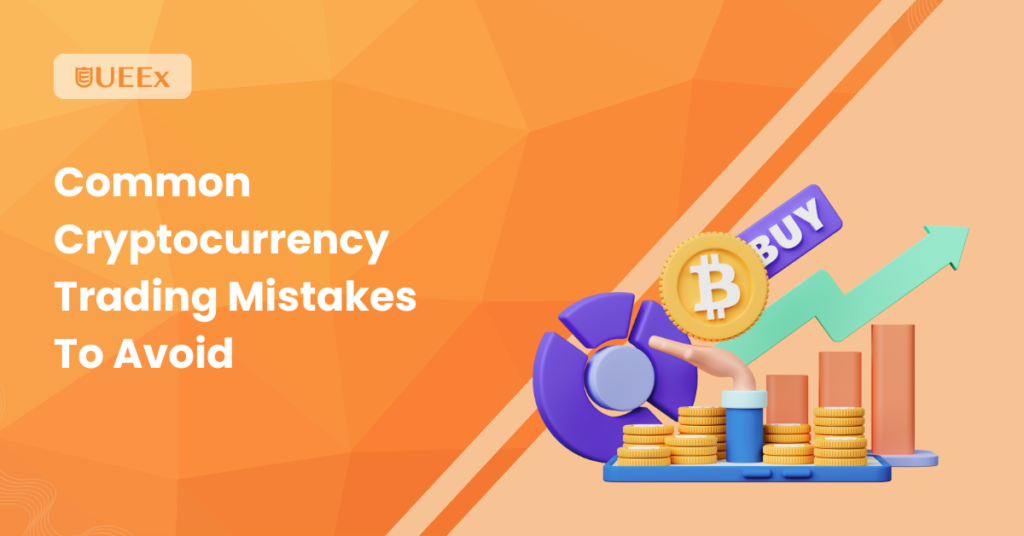
If you’re new to trading, you’re probably about to make some of the same mistakes that experienced traders have already made. While it’s true that mistakes help you learn, some of them can be expensive and avoidable if you know what to watch out for. Many traders, whether just starting or already experienced, fall into the same common traps that can lead to big losses. The good news? These mistakes usually follow a pattern. If you know what they are, you can avoid them, protect your money, and trade smarter. In this article, we’ll look at the most common mistakes crypto traders make and share simple tips to help you steer clear of them. Key Takeaways Not Doing Proper Research Source: Freepik Just because you have a simple understanding of how crypto works does not mean you’re ready to start trading. One of the biggest mistakes beginners make is not doing proper research. Many rely on hype, social media, or tips from friends instead of digging into the facts themselves. Before investing in any cryptocurrency, you need to understand this: This means reading the whitepaper, checking the roadmap, and looking into the team and community. A strong, active community is usually a good sign. A weak or negative one can be a red flag. Don’t ignore market news or past price trends. And be careful where you get your information, some sources are biased or even paid to promote certain coins. In crypto, the golden rule is DYOR, Do Your Own Research. It’s the best way to protect yourself from making bad decisions and falling for scams. Read Also: Crypto Tightrope Fear of Missing Out (FOMO) Source: Freepik Emotional trading, the main culprit here, will not only destroy your profits but also your confidence. One of the most common emotional mistakes in crypto trading is FOMO, Fear of Missing Out. FOMO happens when traders buy into a coin just because its price is rising fast. They worry they’ll miss a big opportunity, so they jump in without thinking. But by the time they buy, it’s often too late, prices may drop soon after, leading to losses. FOMO can also cause people to invest in risky projects just because of hype. Or, they might sell too early out of fear of losing profits, missing out on future gains. Smart trading means staying calm and disciplined, not emotional. Falling for Scams Source: Freepik Yeah, I know this may be hard to notice, I mean no one knows they’re falling for a scam until it’s too late. But in crypto, scams are everywhere, and they keep getting trickier. Because crypto isn’t fully regulated, it attracts scammers trying to steal your money. Some common scams include fake crypto romance stories, Ponzi schemes, rug pulls, phishing attacks, and fake job offers. Scammers may even use fake trading apps or pretend to help you recover lost crypto. They often sound too good to be true, and that’s your first red flag. To stay safe, don’t trust random tips on social media or jump into investments without checking things out yourself. Always do your research and stay skeptical. Ignoring Risk Management Source: Freepik Many beginners skip this step, thinking profits will come easily. But without risk management, losses can pile up fast and wipe out your trading capital. Simple rules like using stop-loss orders, risking only 1–3% of your money on each trade, and not putting all your funds into one coin can protect you from big losses. Crypto markets are very volatile. Coins can crash overnight, just like Luna did. That’s why spreading your money across different coins (diversification) and using risk-to-reward ratios (like 1:3) are smart moves. It means even if you’re wrong more often than right, you can still make a profit. Investing Too Much Too Early Source: Freepik Never put in money you are not comfortable losing, because doing that will increase your chances of making emotional decisions and taking big risks too soon. Since losses are common in the beginning, it’s smarter to start small, learn the ropes, and get advice from experienced traders. This way, you protect your money while building knowledge and confidence. Read Also: How To Avoid P2P Crypto Scams and Crypto Frauds Trading Blindly Source: Freepik You can’t enter the crypto market without a clear plan; that’s called trading blindly, and it’s a big mistake. A good plan includes your strategy, how much time and money you’ll commit, and how you’ll manage risk. Stick to your plan using tools like stop-loss and limit orders. Just because you had a bad day doesn’t mean your plan is wrong; it may just mean the market didn’t go your way. To avoid repeating mistakes, keep a trading journal. Write down your trades, why you made them, how you felt, and the result. This helps you spot patterns and improve over time. Without this, you miss chances to learn and grow. Prioritizing Immediate Rewards Source: Freepik After making your first profit, you think you’ve figured it out and want more, fast. This is a common mistake. Many new crypto traders chase quick gains, hoping to make big money in a short time. But focusing only on fast rewards can lead to bad decisions, especially when you react to small price changes instead of thinking long-term. Real success in trading often comes from small, steady gains that grow over time thanks to compounding. Also, making money on one trade can give false confidence. The excitement might push you to jump into the next trade without proper research. This can erase your gains quickly. Not Choosing the Right Crypto Exchanges Source: Freepik This is usually the first thing to do when you are just starting, and getting it wrong can cost you later. Many beginners rush into signing up with the first exchange they find, without checking if it’s right for them. A good exchange should be High fees, confusing platforms, or poor support can make trading harder and eat into your profits.
Crypto Tightrope
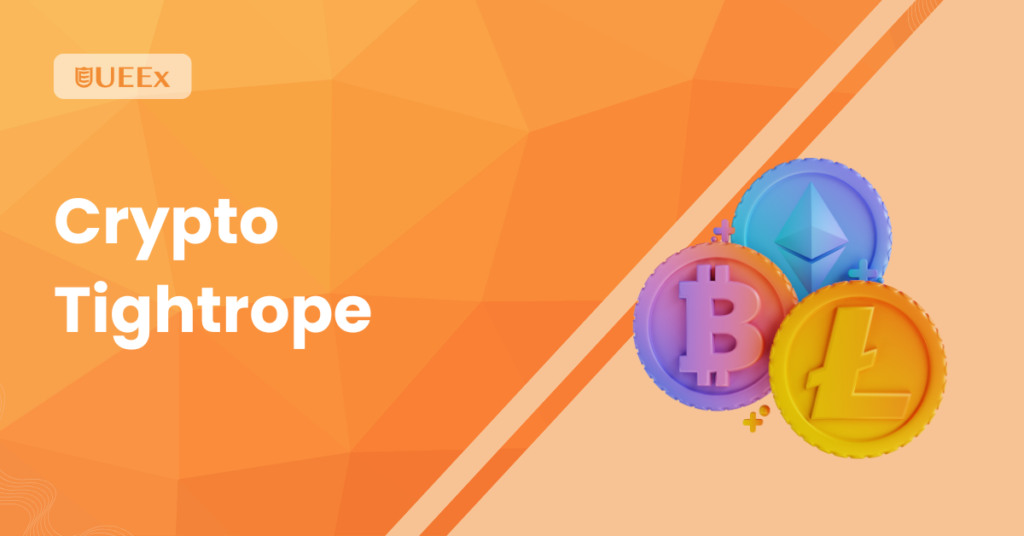
Do you know that 60% of reported crypto-related fraud cases involved retail investors in 2024, according to FTC reports? As interest in digital assets continues to develop, walking the “crypto tightrope,” that is, the balance between adoption, risk, and regulations, is becoming increasingly important. The crypto landscape is increasingly multifaceted, with different regulations and AI-driven solutions. As an active investor, developer, or crypto enthusiast, it’s vital to stay ahead through foresight and proactive steps. This guide identifies useful tips to help you flourish without missing a step. Key Takeaways What Is the Crypto Tightrope? The term “crypto tightrope trading” captures the razor-thin line a trader walks between maximizing potential profit versus minimizing potential risk within the unpredictable world of cryptocurrency. Tightrope trading involves managing sudden shifts in price, regulatory ambiguity, and ever-changing technologies, while employing reasonable and disciplined decision-making to mitigate large drawdowns. The development of crypto over the last 15 years is a great illustration of this balancing act. In 2009, Bitcoin was born, decentralizing money; in 2015, Ethereum expanded the protocol possibilities with its smart contracts; and by 2020-22, the world was on fire with the development and growth of DeFi, NFTs, and memecoins that disrupted the market beyond where it had been. Adoption—and speculation—had set records. The reckoning that followed in 2022, marked by the FTX collapse and long-term consequences from court decisions (e.g., SEC lawsuits against the industry, Europe’s MiCA regulatory framework), was a requirement for maturity in the crypto space. Now in 2025, the crypto space consists of rapidly emerging institutional players (e.g., Bitcoin ETFs and CBDCs), and retail traders, developers, and policymakers are all attempting to shape the market. Read Also: Crypto Market Correction: What Every Investor Should know The Legal Tightrope in the Crypto Space As the world enters 2025, the cryptocurrency industry finds itself standing upon a shaky legal tightrope. All around the world, governments are trying to figure out how to balance crypto regulation and the need to nurture innovation within their jurisdictions. However, the results have varied regionally. In the United States, two agencies—the SEC (Securities and Exchange Commission) and the CFTC (Commodity Futures Trading Commission)—actively regulate the crypto sphere. The Ripple vs. SEC matter will likely go down as the most watched legal case in crypto history before partially resolving in 2023 and establishing a precedent for what constitutes security in the crypto digital landscape. The CFTC also asserts growing authority over crypto commodities (commodities such as Bitcoin). In 2025, the U.S. actually saw the Stablecoin Oversight Act make it through both chambers of Congress, providing more transparency around monetary reserve requirements for issuers. The EU’s MiCA (Markets in Crypto-Assets) regulation became fully effective this year. It aims to create a single legal framework for member states that addresses issues relating to legal, licensing, transparency, and consumer protection. The regulation has been openly accepted by crypto companies that are looking for regulatory certainty. Early indicators show this regulation is also increasing investor confidence in many regions. In Nigeria, the Securities and Exchange Commission (SEC) also released some clarified regulations for the issuance of digital asset securities and for registration of crypto exchanges, building on their objective of integrating the crypto ecosystem into the formal financial system. What is perhaps unique in Nigeria is that they are able to strike a balance between innovation and consumer protection. On the other hand, China has sent out a decree against trading and mining crypto, while Japan still stands as the regional leader with one of the most robust frameworks in place in Asia. The Japanese system of obligatory KYC/AML (Know Your Customer/Anti-Money Laundering) compliance offers a good example of responsible innovation. How Developers Handle the Innovation and Compliance Tightrope Developers are torn between true innovation and compliance issues as they look for ways to stay within compliance. Here are the challenges they face and how they are navigating through them. Compliance Challenges The competing interests of building fast and building safe are at an all-time high, especially as global authorities explore decentralized systems that operated previously in legal grey areas. One of the biggest challenges for developers is combining decentralization with regulation. For example, developers of decentralized finance (DeFi) protocols are now being asked to include KYC (Know Your Customer) and AML (Anti-Money Laundering) features on platforms that were built on the idea that there would be no gatekeepers. Scalability vs. Security Some leading protocols are starting to test “permissioned” types of their protocols, like AAVE and Uniswap, that limit the availability for wallets that partner with decentralized identity systems. For some, this version of DeFi is a softening of the values; for others, it is one of many evolutionary steps that have to take place to make DeFi manifest in a regulated future. There is also a whole new layer of complications relating to the scalability and security trade-offs developers have to make. It’s impossible to avoid that the infrastructure will have to improve and be faster as adoption increases. But often, to get speed, there has to be a sacrifice of some level of decentralization or security. Layer 2s like Optimism and Arbitrum have been working on compliance-friendly features to help developers meet legal requirements more easily without performance concerns. However, this too comes with considerations, as developers must continually evaluate whether their scaling decisions affect the trustless nature that users expect from Web3 platforms. Emerging Tools Developers Use to Avoid Crypto Tightrope As developers battle these innovations and challenges, this year has also brought forth some new, powerful tools that could facilitate innovation and embrace compliance. AI-powered smart contracts have increasingly impacted the space by enabling automated monitoring of code at runtime, ensuring compliance with regulatory changes, and or preempting risky or illegal behaviors before they happen. This allows developers to build without worrying about compliance-related issues. In addition, zero-knowledge proofs, or ZKPs, are more popular as a compliance use case because they enable validation of transactions or user credentials without revealing personal data. New start-ups that are

